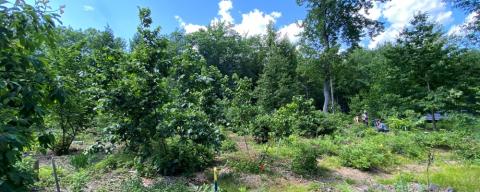Food forests are intentionally designed, multistoried systems of diverse food-producing annual and perennial plants. Many cultures around the world have developed similar agroforestry systems with highly integrated management that promotes resource partitioning and complementary relationships when possible. These systems are often informed by Traditional Ecological Knowledge, mimic a native forest structure, and produce fiber, medicine, building materials, and other useful products, in addition to food.
Food forests and other complex multistoried agroforestry systems can provide ecological benefits, supporting processes such as biodiversity, soil health, and nutrient cycling, as well as social benefits such as local food production, environmental education, and community engagement. They are appropriate for a wide range of contexts, from the backyard to community scale, on both public and privately owned lands, in rural, suburban, and urban settings.

